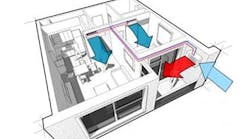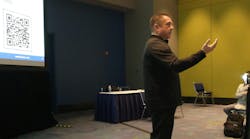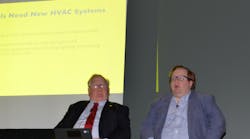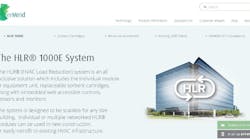With the building sector responsible for nearly 48 percent of all energy consumption in the U.S. and global warming the subject of heated national discourse, commercial building developers are under growing pressure to make a difficult choice — produce the best possible financial outcomes, or increase their building costs to boost energy efficiency and reduce carbon emissions.
Technologies such as enVerid Systems Inc.’s HVAC Load Reduction module offer building owners the opportunity to reduce the required capacity of HVAC systems and their related costs so that the incremental cost of adding this technology is zero, or even negative.
HLR technology is designed to reduce indoor air contaminants such as carbon dioxide, aldehydes and volatile organic compounds for greener buildings. Instead of the traditional process of replacing the entire volume of a building’s indoor air every one to two hours, HLR modules clean and recycle existing indoor air.
This enables a 60- to 80-percent reduction in required outside air intake, and a decrease in cooling and heating energy consumption of 20 to 30 percent (up to 40 percent in peak periods). The resulting cost savings comes from reduced energy usage, as well as lower initial capital expenses.
The average green building is worth 7 percent more than its traditional counterpart, and is 14 percent less costly to operate, notes the World Green Building Trends 2016 Smart Market Report. HLR systems are eligible for local utility rebate programs and companies can earn as many as 17 LEED points — more than 40 percent of the points required to receive LEED certification — merely from implementing HLR technology with an indoor air quality assessment.
“Traditionally, higher building energy efficiency means higher initial cost, whereas solutions like HLR technology are turning this on its head,” said Dr. Udi Meirav, founder and CEO, enVerid Systems Inc. “With HLR technology, building owners and developers do not have to choose between saving money and saving the environment.”
A major university in Florida, for example, was faced with higher than desired energy costs and a commitment to high air quality and comfort. Using HLR technology enabled them to see a 41 percent peak capacity reduction, 28 percent average reduction in total HVAC energy consumption, and overall better indoor air quality and comfort.









